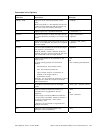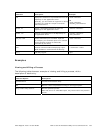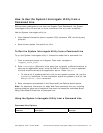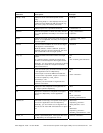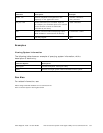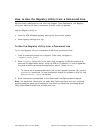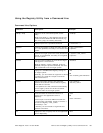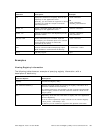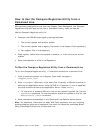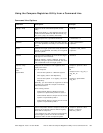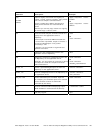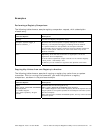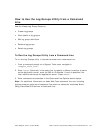
Cisco Support Tools 1.0 User Guide How to Use the Registry Utility from a Command Line 136
Command: Description: Example:
view Displays the contents of a registry file from the
Repository on the application server.
Optionally, you can include an argument to dump
this output to a local file. Output is stored as
XML-formatted text.
>view <filename>
OR
>view <filename>
<localfile_path\filename>
remove, rm Deletes a specified registry file from the
Repository on the application server.
>remove <filename>
rename, ren Renames a registry file in the Repository on the
application server.
>rename <filename>
<new_filename>
read_file, read Directs command input to another input file.
For example, you can direct input to run a batch
file that contains a series of commands
executable by this utility.
>read <filename>
silent Executes command without displaying output.
Note: Available in command-line mode only.
><command> /silent
quit, q Ends the program. >quit
Examples
Viewing Registry Information
The following table shows an example of querying registry information, with a
description of each entry.
Command Option: Description:
>registry Invokes the Registry utility.
>list /instance customer_1 Queries the target system and returns the registry information for a
customer instance named customer_1.
If a specific instance in not specified, the List command automatically
returns registry values for the first customer instance it finds on the
target system.
>save Optionally, saves the data returned to a registry file in the application
server's Repository.
If no file name is specified, output is saved to a file named: Registry
<host_name> <timestamp>.xml.
If desired, you can include an argument that specifies a file name.



